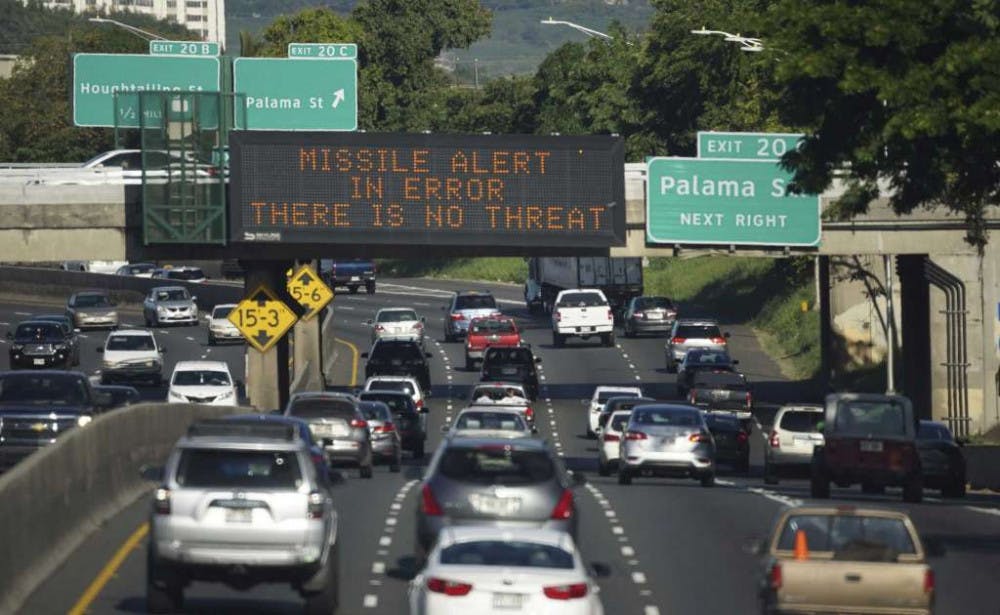By Rebecca Colnes
Staff Writer
Hawaiians and tourists were bombarded by messages flashing on phone screens, televisions and highway signs reading: “BALLISTIC MISSILE THREAT INBOUND TO HAWAII. SEEK IMMEDIATE SHELTER. THIS IS NOT A DRILL,” at about 8 a.m. on Jan. 13, according to The New York Times.
It was discovered nearly 40 minutes later that the message was sent out by mistake.

The morning of the false alarm, an employee at the Hawaii Emergency Management Agency arrived at work and began initiating a practice internal test of an emergency missile alert system not intended for public release. Instead of initiating the “test missile alert” system, the employee selected “missile alert,” according to The Washington Post.
“In this case, the operator selected the wrong menu option,” said HEMA spokesman Richard Rapoza, according to The Washington Post.
The false alarm contributed to recent rising tension in the Pacific. After emergency drills began at the end of last year, Hawaii revived Cold War-era nuclear sirens in fear of an attack from North Korea, according to The Washington Post.
Hawaiian senator Brian Schatz called the mistake “totally inexcusable,” and urged that the state must work to establish a trustworthy alarm system, according to The New York Times.
Allyson Niven, a resident of Kailua-Kona, recalled her panic to The New York Times.
“We fully felt like we were about to die,” Niven said. “I drove to try to get to my kids even though I knew I probably wouldn’t make it. It was awful.”
Vern Miyagi, the administrator of HEMA, worries about the credibility he must work to re-establish, according to CNN. In the event a real alarm is necessary, the agency worries whether people on the islands will take the alarm seriously.
Hawaii State Representative Matt LoPresti suggested that a second confirmation alarm would be necessary in the event of a real emergency. After the alert sounded, LoPresti and his family took shelter in a bathroom in their home and began to pray, according to CNN.
“We all just got down, got in the tub, waiting for a flash and I was going to cover the kids with my body,” LoPresti said, according to CNN.
North Korea lies less than 5,000 miles away from the Hawaiian Islands, meaning that the state would have about 20 minutes notice of an incoming missile from North Korea. Growing tensions leave Hawaii on especially heightened alert, according to CNN.










